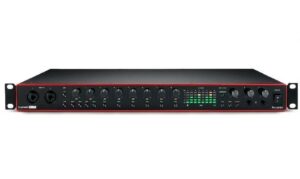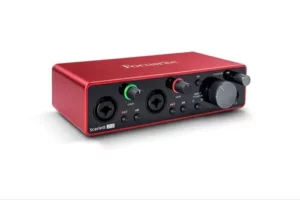Table of Contents
Introduction
The difference between a piano and a keyboard is a very common question while assessing which instrument to buy. While the two terms are often used interchangeably, they are actually two different instruments that produce similar sounds.
Though the term “keyboards” is sometimes used broadly, and can technically include several other instruments like the Harmonium or the Accordion, it does have some specific aspects which differentiate it from the Piano and the Digital Piano. Let’s break down what a piano, a digital piano and a keyboard really mean before getting into the key differences between each of them.
Piano
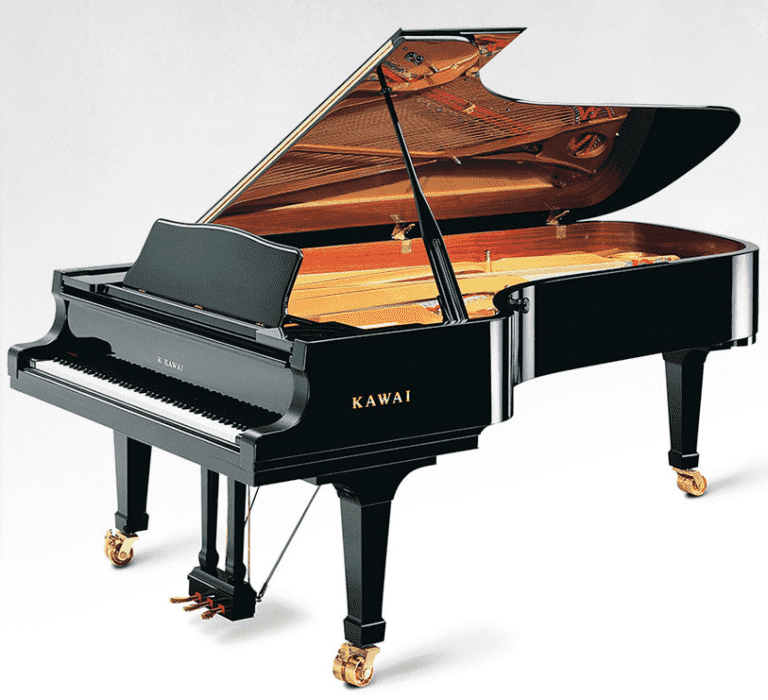
A piano is an acoustic instrument that has been around for a long time. They are the big, beautiful instruments you might hear a pianist playing in a concert. They have 88 weighted keys, providing the full range of notes. Pianos are typically crafted for stage performances, like the Kawai EX. The “weighted” attribute essentially means that when you push the key down, the weight of the key pushes back on your finger. and gives you a slightly heavier feel. This happens because in the mechanism of a piano, when you strike any key a hammer hits a string which vibrates to produce a note that you hear. Therefore, you’re pushing against a slight force.
Pianos are responsive to touch, so when you hit the keys lightly the hammers hit the keys more gently and the sound is softer. When you press more deeply making the hammers hit the strings more forcefully, the sound is louder. A piano also comes with three pedals. The one on the left helps soften the sound, and the one on the right helps to sustain the sound. The function of the middle pedal varies from piano to piano. Sometimes it softens the sound to make the piano a little more pleasurable to listen to when you’re practicing, while in more modern pianos the middle pedal is used to sustain only the sound of the notes that are being held down when the pedal is pressed so the other notes that follow aren’t affected.
Digital Piano
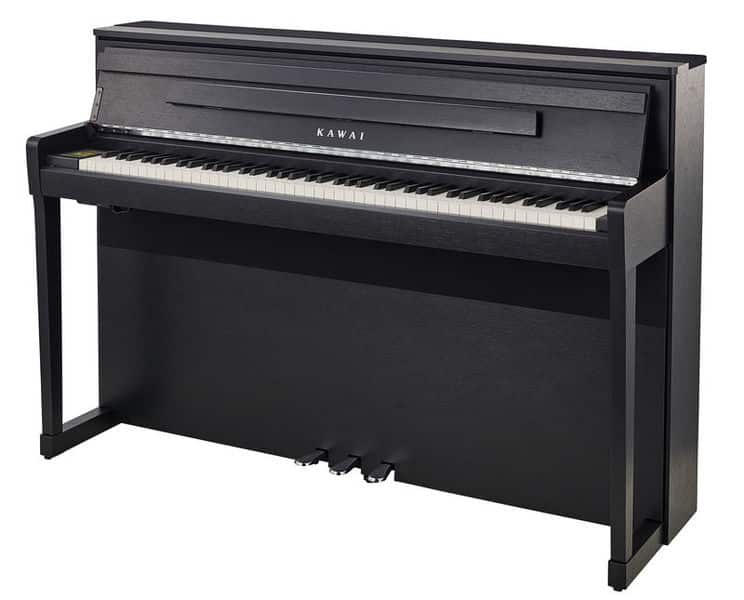
A digital piano looks and sounds like an acoustic piano but is smaller, lighter and generally more affordable. It will typically come with in-built speakers and three pedals, like the Kawai CA99. On a digital piano, the keys will generally be weighted to replicate the same feel as the hammer action on an acoustic piano.
For students taking graded exams such as ABRSM or Trinity, a digital piano is the approved choice. A stage piano, as the name suggests, is more portable than a digital piano and will typically have a single sustained pedal. A stage piano generally connects to an external amplifier or sound system and is more suitable for live performances.
If you are a student, try speaking to your teacher about the most appropriate choice of piano. Different teachers would have different requirements and there are a large variety of models available suiting players from students to professionals. It’s also worth knowing that digital pianos can come with computer connectivity, offering a world of fun, new sounds and learning possibilities. You might also love a digital piano for something it won’t come with – the ongoing tuning costs you’ll incur if you wish to maintain a real piano.
Keyboard
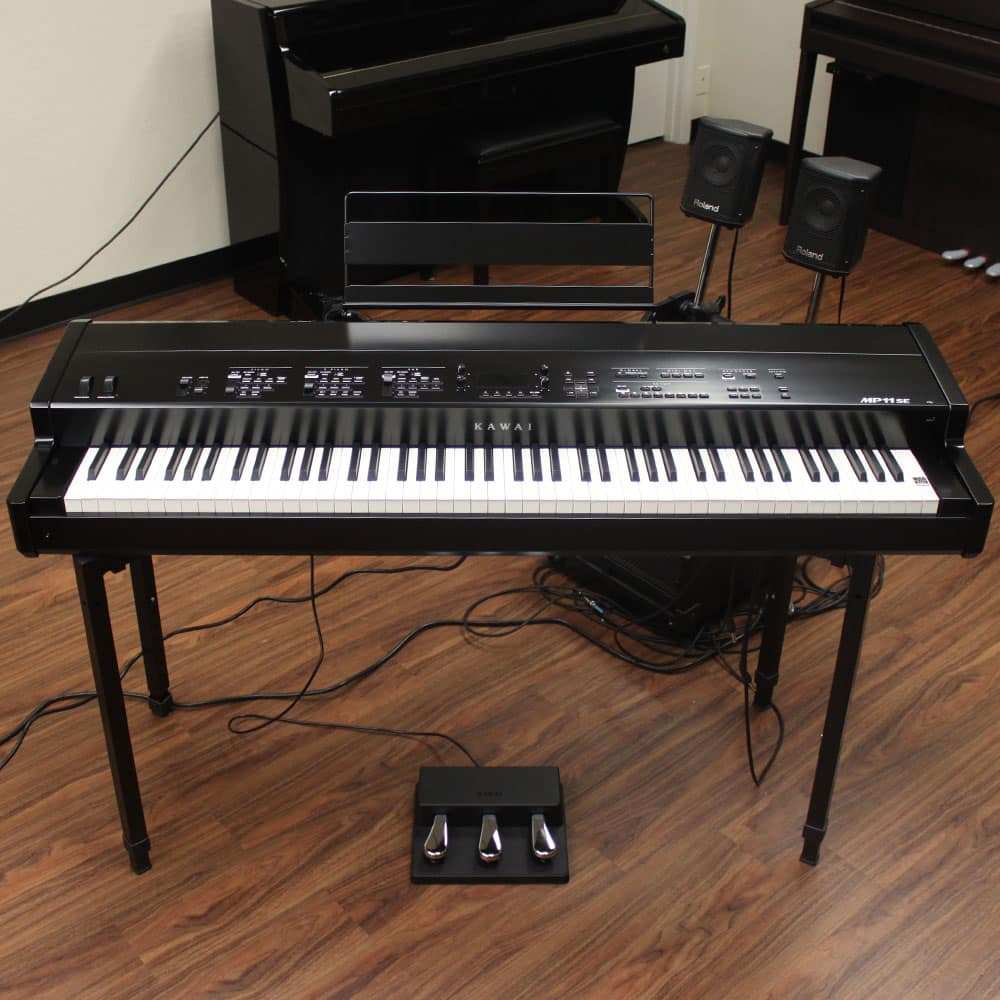
There is no real criteria for what features a keyboard can have; it can be a toy that mimics the sounds of musical instruments when you press it, a MIDI controller, or something really advanced as one that can sound and feel like a piano, like the Kawai MP11SE (view on Amazon).
A keyboard can have 88, 76 or 61 spring-loaded keys with various arranger modes. They usually don’t have weighted keys, so the keys aren’t nearly as difficult to press down. There’s not nearly as much weight pushing back on your fingers, because as you’ve probably guessed, the sound is generated electronically. Keyboards come with a variety of looks, sounds, rhythms, connectivity to computers and more. This can make music a lot of fun for a beginner at any age. When it comes to deciding which model is best suited to your needs, the trick is to try out a wide selection of keyboards.
Keyboards have gotten more refined and a lot smaller in the last fifty years. Fifty years ago, a keyboard was the instrument-looking part of a synthesizer, a Fender Rhodes or a clavinet. They all had different manufacturers. Now, there are one or two main manufacturers that have monopolized the industry and make a ton of products. Along the way, the term “keyboard” has gained many different meanings. Portability and additional features relating to tones, rhythms, connectivity, etc. were huge factors in designing newer keyboard models.
If you are looking for a beginner keyboard, check out our best recommendations here.
Difference between a piano and a keyboard
To understand the difference between a piano and a keyboard, it’s important to understand what they each bring to the table. A piano is best suited to live performances for the sheer range of emotion you can draw from it, and if you’re willing to commit to learning and maintaining the instrument for several years. Most beginner keyboards are cost-effective and portable but they may not be touch-sensitive, and the only way to vary their loudness is to control it with the volume knob. A digital piano is most appropriate when you’re looking for a model with weighted touch-sensitive keys that don’t require regular tuning and maintenance.
1. Texture
A significant difference between a piano and a keyboard is the texture of each instrument. A lot of the upgrades, research and development to digital pianos are going to be directly found in the texture or action of the instrument, which is the way it feels and sounds. The feel is going to be directly correlated to the authenticity of the sound, so the more you spend on a digital piano the better it feels and the sound will be more similar to an actual piano. A digital piano is trying to replicate an actual piano not only in terms of feel, but also the sound. Their prices can vary between INR 10,000 to several lakhs, but they are mostly cheaper than an actual piano.
The keys on a keyboard, however, will feel lighter as you press them since they won’t be weighted to replicate the hammer action on a piano. This is because keyboards were not developed with the goal of replicating an actual piano feel, but to bring together a wide range of user-friendly features that would make the instrument more accessible. For a keyboard, it is important to understand that some – not all – keyboards come with velocity-sensitive keys. If a keyboard has velocity-sensitive keys, this means that the volume of the note will sound louder the harder you strike the key. Similarly, the note will sound softer if you strike the key more softly. If a keyboard does not have velocity-sensitive keys then the note will have the same volume, regardless of how hard or softly you strike the key.
2. Portability
A digital piano is mostly full-sized and has 88 keys just like an acoustic piano, so it’s not exactly portable. A keyboard, on the other hand, often has 61 or 76 keys making it shorter than a piano and can be carried around for gigs and performances. This is mainly since keyboards are developed with portability and accessibility features in mind, while digital pianos aim to resemble a piano as far as possible with their electronically sampled tones. If you just want to take your instrument to the beach or you’re not looking to develop your skills beyond a foundational level, an entry-level keyboard in the range of INR 6000-8000 should do the trick. If you want to introduce someone to the piano, a beginner level Yamaha digital piano would be ideal for them to play around with the various tones and rhythms, get a feel of the sound dynamics and eventually take up piano lessons.
3. Versatility
A digital piano is not intended to be versatile in terms of tone generation, samples and modulating, especially with the new technology that’s coming up with actual built-in speakers. Packing additional features in a digital piano such as the tones, rhythms, size, volume of the speakers is going to cost a lot more but will result in a full, dynamic sound in an instrument that’s really trying to replicate an acoustic piano.
A keyboard, on the other hand, is more about portability and non-traditional features like synthesizers or MIDI controllers. The goal of a keyboard is to be as versatile as possible in terms of connectivity and portability features. It’s reached a point where music production can all be done at home using a full-sized MIDI compatible keyboard, such as the Yamaha P45B (view on Amazon).
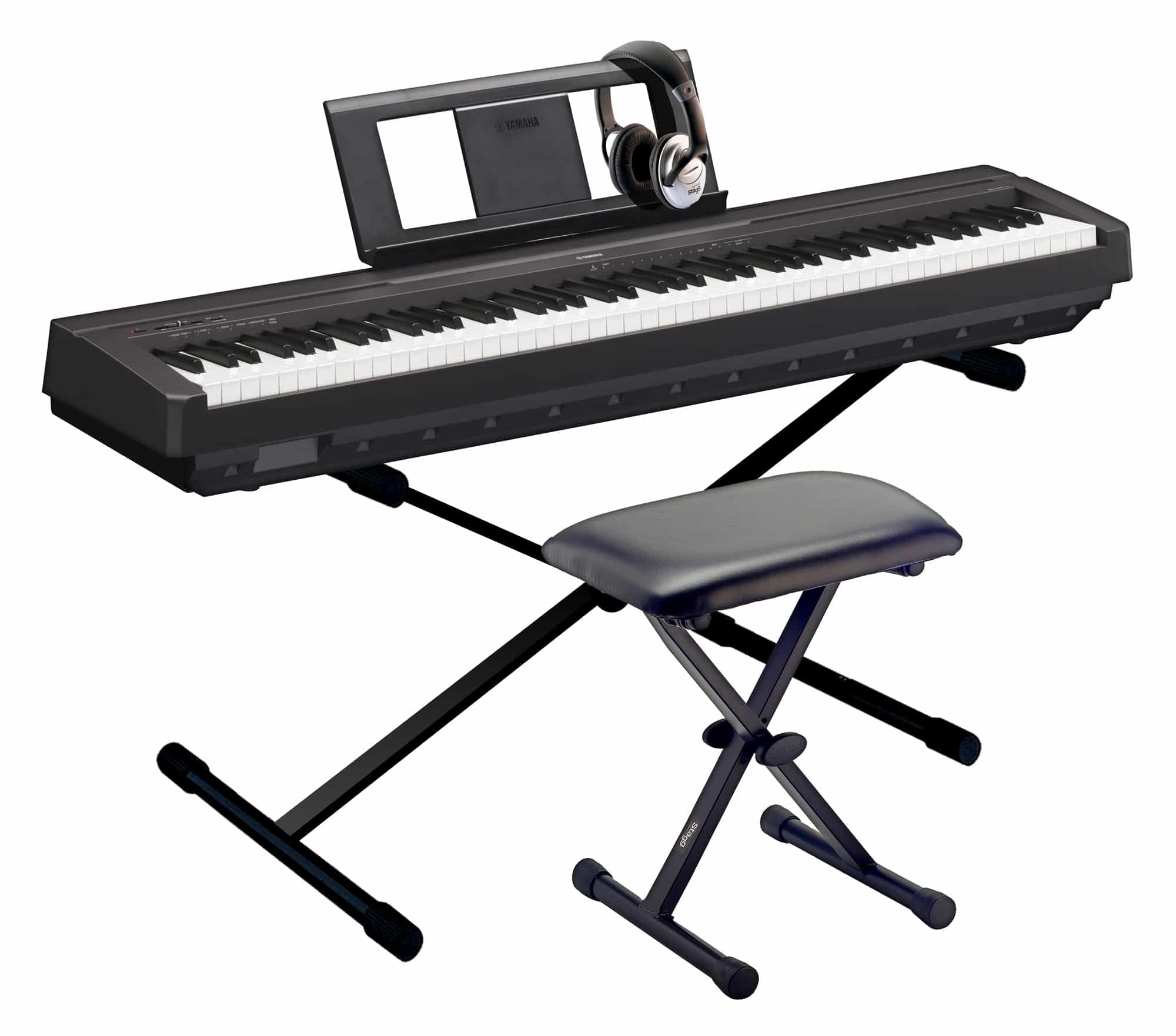
It’s very important to know what the purpose of your instrument is. If it’s for piano lessons, talk to a piano teacher and ask them what features you should be looking out for. They may guide you in the keyboard or digital piano direction but for the most part, all digital pianos are keyboards. These terms are used very fluidly and they are interchangeable in many contexts.
Which one should you buy?
To answer the question, “Should I buy a piano or a keyboard?”, you would need to consider a number of factors.
It’s easy to get distracted by all the variations of a keyboard, but it’s important to realize what you’re actually looking for and what goal it serves. If you’re looking for a keyboard that you can plug into your computer and track various drum and bass sounds and rhythms or even control light setups, a MIDI controller would be the best choice. If you’re looking for a musical workstation or an organ simulator, or something you can learn piano on, you could go for something like the Yamaha PSS-A50 (view on Amazon).
Misdiagnosed instrument needs are a very common problem; you might look at an instrument intended for music production and think it looks cool, but it may not have the features you require such as speakers or sound generation on it. If your journey starts with the wrong instrument, chances are it will not serve the purpose you intended it for.
In some cases, students who play a solo instrument like a clarinet, trumpet, violin, etc. may require something that can play back the MIDI file of a violin concerto without the violin in it – or configure it however they wish to rehearse their parts. There are a lot of keyboards that support layered MIDI files, while a digital piano doesn’t always have come with MIDI compatibility. This is another extension of what a piano or a keyboard could do to help a pro musician as a student or a soloist to have a keyboard or digital piano to play the MIDI files you can download and use.
If you have a hard time answering the question what your keyboard requirement is, find the right person to ask – whether that’s someone at your local music store or an online music educator. Keyboards and digital pianos are progressing really fast and the lines that define them are blurring. You would want your skills to translate from an electronic instrument to an actual piano, but you might lose the feel and sound of the instrument if you have been practicing on a keyboard. Familiarizing yourself with the texture and dynamic control of a piano is very important when it comes to learning an acoustic instrument. If those are the features you’re willing to spend on but you don’t want the bells and whistles of a keyboard, you could consider a digital piano.
There are a range of price options in pianos and keyboards. Whether a piano or a keyboard, a higher price will give you better quality sampling, which is the authenticity of their sounds and tones. Digital or stage pianos with weighted keys will better replicate the authentic feel of a piano’s hammer action.
If you don’t know whether the student will take up piano or keyboard playing long term, there are many basic student models available. However, if you believe they are going to be in it for the long term, you can explore more intermediate or professional models. It is more important that the student likes the way it looks, feels and sounds. You’ll want them to be comfortable in all aspects – even down to the right height if they’re playing seated. Get this right and they’ll want to play more, and that means they’ll enjoy a quicker progression – the key to a long-lived and enjoyable music journey.



